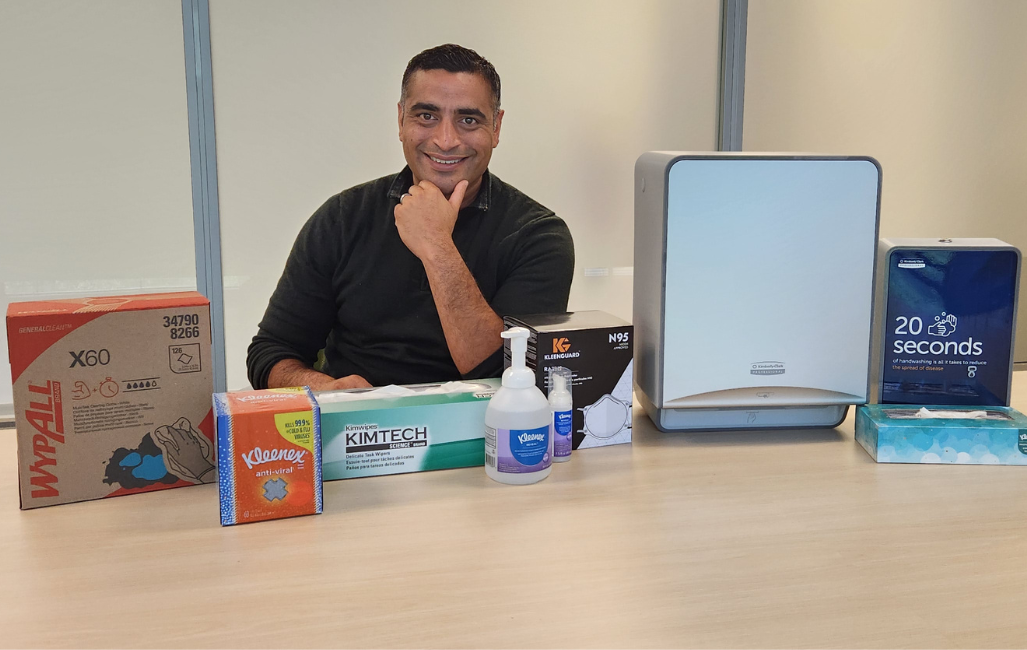To recognize Asian American, Native Hawaiian and Pacific Islander (AANHPI) Heritage Month, vice president of Kimberly-Clark Professional (KCP) development and innovation, Mayur Valanju, shares his experience as an AANHPI professional in leadership and his perspective on the importance of diversity and inclusion, both for individuals and organizations.
As a native from right outside Detroit, Michigan, I grew up celebrating diversity. The schools I attended were filled with students from various backgrounds, and the high school I attended was so diverse that we would celebrate different days throughout the year to honor students of different backgrounds through cultural performances, food, and education. I even used to perform Bhangra dancing as part of these celebrations.
However, it wasn't until I got to college that I realized my experience was very different from others. A close friend, who was also Indian, grew up very differently than I did; he came from a small town and felt like an outsider because his parents ate different foods and followed a different religion than most of the community.
As I entered the corporate world, I've been fortunate that all the companies I worked for were accepting of people from different backgrounds. I never felt treated differently because of my ethnicity. However, I had to work on feeling comfortable with challenging the status quo and presenting different ideas to my leaders, as there is a cultural tendency to show deference to authority figures and elders.
Looking back over my career, my leadership style has evolved to be true to myself. The best advice I received was to be the leader that I am, rather than trying to emulate others.
As a leader at Kimberly-Clark, I strive to live out
inclusion, diversity and equity every day and making it a priority for my team. One thing I've learned is that to create an inclusive environment, it takes both the willingness of people to learn about other's cultures as well as the willingness for people to share their experiences.
When I was more junior in my career, I decided to wear a Kurta, a type of Indian clothing, to work during Diwali. I remember walking down the hall thinking “Everyone is staring, did I make a mistake doing this? Are people going to judge me negatively?"
However, the exact opposite happened. People took a genuine interest as to why I was wearing a Kurta, and I got a chance to explain Diwali. For me, it was a good learning that once you open up the conversation, people love learning about different cultures and backgrounds.
Kimberly-Clark does an excellent job ensuring all employees can bring their most authentic selves to work by supporting different employees resource groups and prioritizing having a diverse leadership team - one of the most diverse leadership teams I've been on.
One of the employee resource groups Asian Professionals of Excellence (APEX), provides a community for Asian professionals of all ethnicities and allies to celebrate, learn and grow together.
My advice for AANHPI employees is to find a community or individuals you trust to discuss questions and issues. I have found people over time from formal and informal mentoring programs and even people that I have met socially. There is a wealth of knowledge in other people’s heads – use it. Do not feel that you must come up with all the answers yourself.
While Kimberly-Clark does a great job supporting inclusion and diversity, more can always be done. Leaders must continue to lead inclusively and prioritize inclusion every day - celebrate holidays of people from different backgrounds, ensure everyone feels heard and included, and create teams that are a safe space for all our employees. Building an inclusive workplace where all employees can advance and thrive is one way to deliver
Kimberly-Clark's purpose - Better Care for a Better World.




